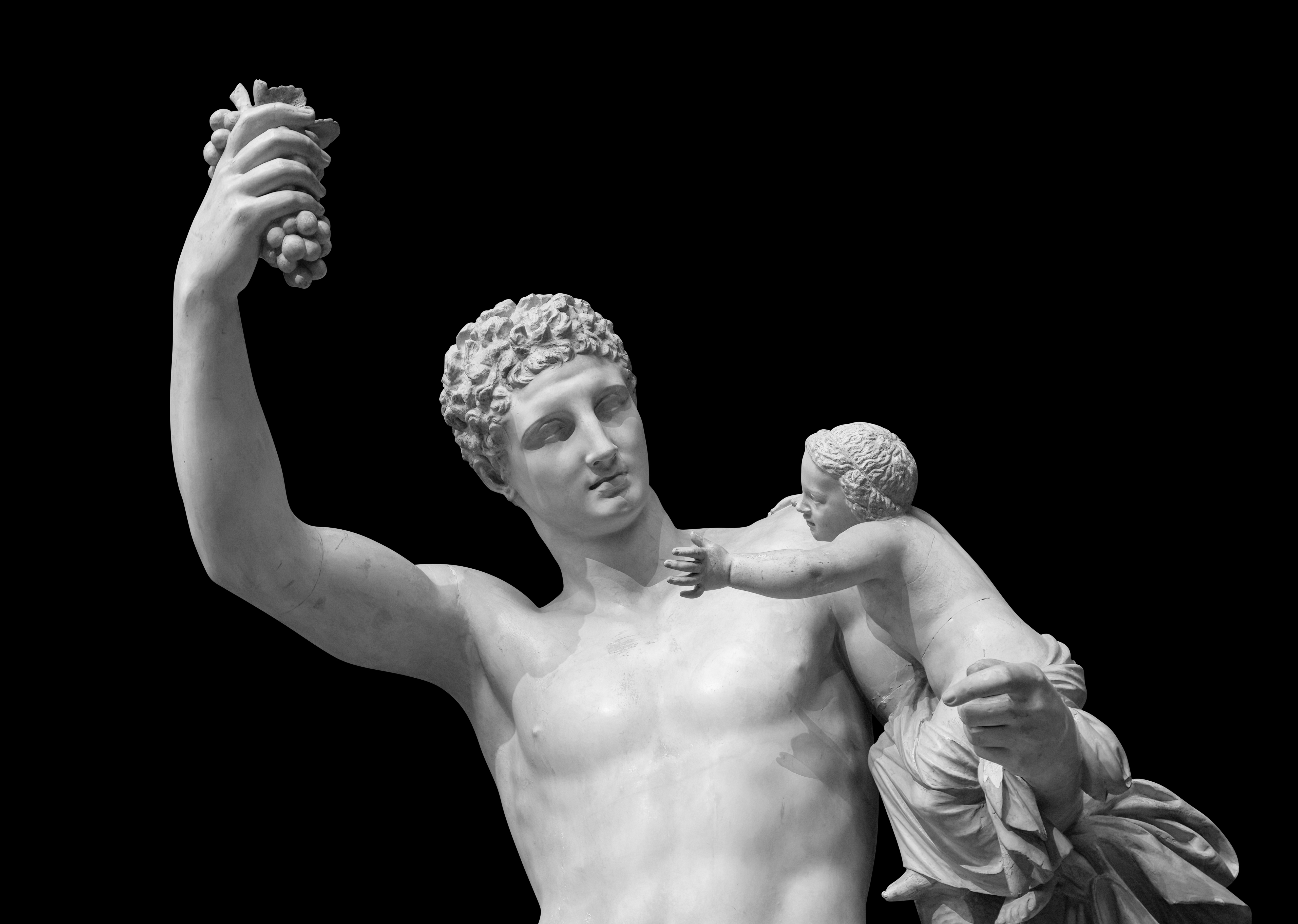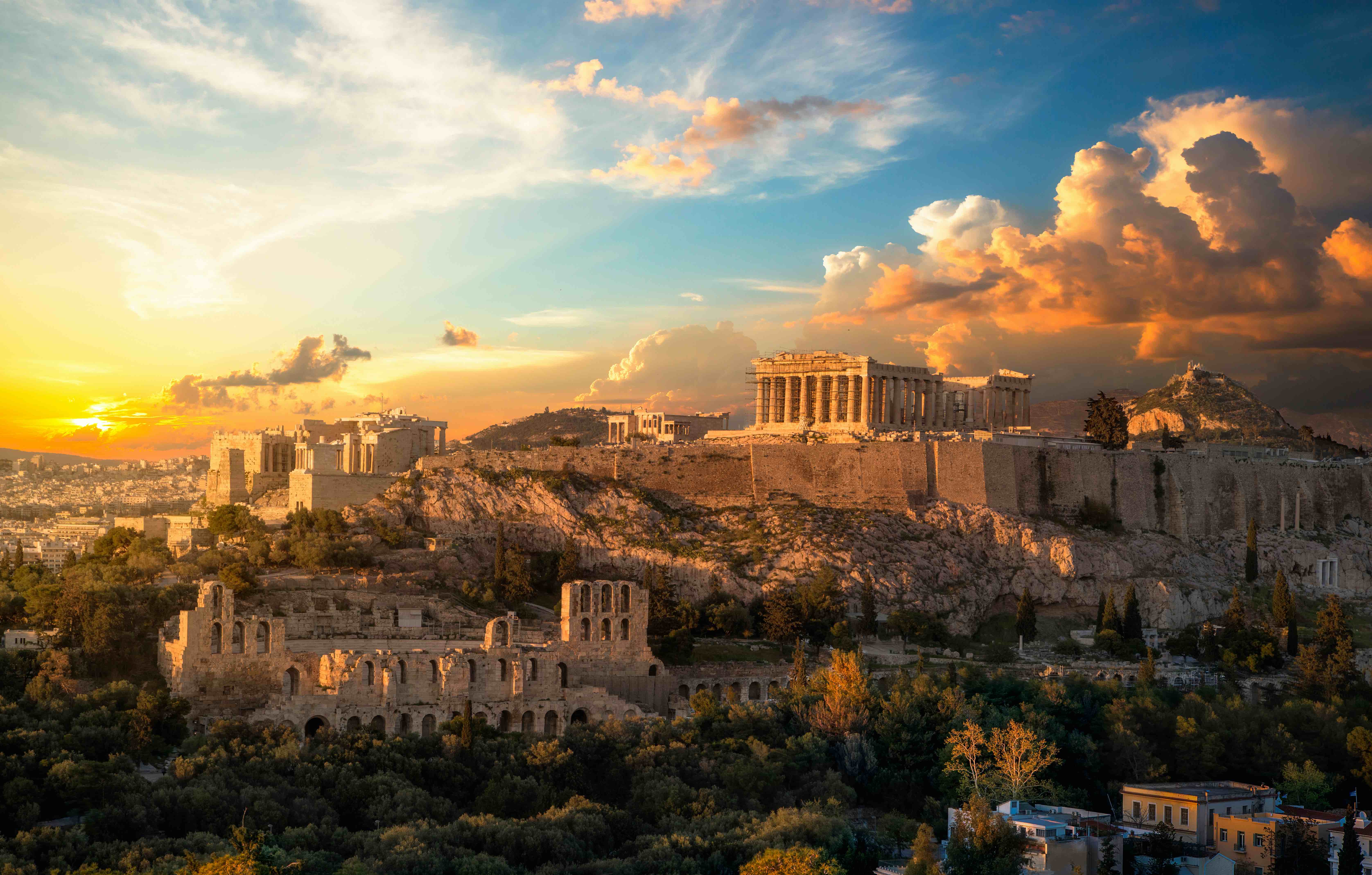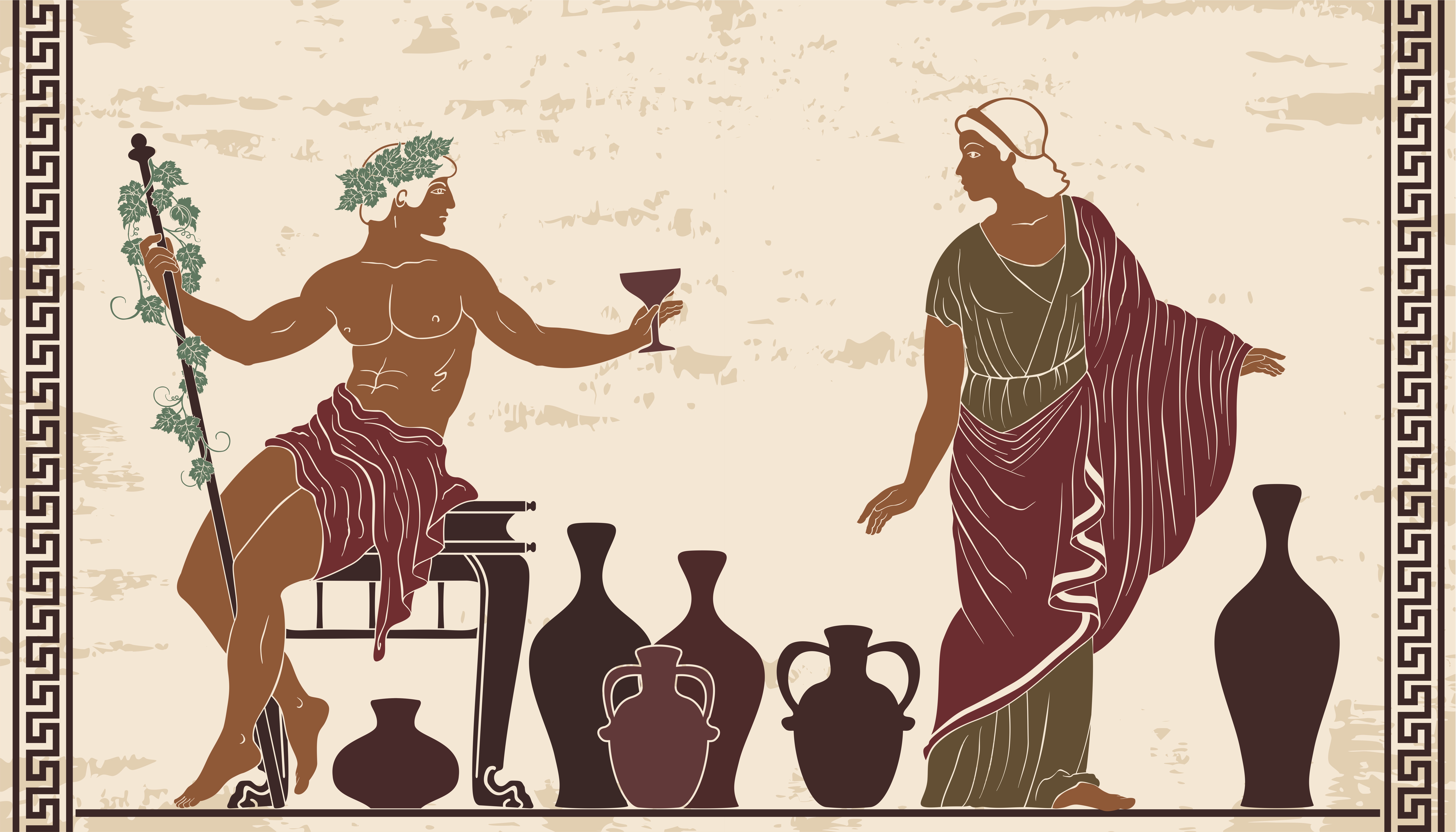
What were the spring holidays like in ancient Athens? Maria Lagogianni, Director Emeritus of the National Archaeological Museum (EAM), describes APE-MPE public spring celebrations in classical (and not only) Athens – without this, this does not mean that the celebrations were not held at all seasons.
“The year-long Attic holidays made up a big part of everyday life, providing relaxation and pleasure, acting therapeutically and liberatingly, while cultivating historical memory and social cohesion,” notes Ms. Lagojanni.
And he adds: “Regardless of private worship in the home, Attic celebrations usually had a public character and political overtones. The Athenians took an active part in city holidays and perceived time in relation to them, since the Attic calendar was divided into twelve months of the lunar year, starting from the first new moon after the summer solstice (July 21-22) and from the month of Ekatombaion (July-August). Then it also coincided with the political year, which began with the assumption of office by a new nominal ruler, who gave his name as a distinctive sign of the year of his term.
So, what holidays adorned the life of the ancient Athenians in the spring? How many of them were sacramental, with holy nights (requiems) or majestic processions? To what gods did they address their hymns, worship, or ecstatic dances? What sacrifices, libations or chthonic sounds did they accompany them with? Maria Lagojanni, former director of the EAM and the Epigraphic Museum, shares her knowledge with us…
Celebrating the arrival of spring

The first spring festival in ancient Athens was Anthesteria, which marked the arrival of spring. The feast in honor of the god Dionysus lasted three days, from the 11th to the 13th day of the month Antestirion, a time coinciding with the end of February – the beginning of March.
“On the first day of the antesteria, the so-called Pythoia, the Athenians opened the pithos with young wines and poured libations from them in the lake sanctuary of Dionysus (probably not far from Olympia). Then they had fun with the slaves at merry feasts, tasting new wine in honor of the god of wine drinking. On the same day, the children were crowned with flowers, presented with toys and allowed to taste wine for the first time, drinking from small clay pots. A series of these miniature earthenware wine jugs, decorated with cute scenes from the carefree world of children, are on display at the National Archaeological Museum (room 56),” says Maria Lagojanni, urging her to visit the museum again at the first opportunity. .
The celebration in the city, however, did not stop on the first day of the celebration. “The second day of the antesterias, the so-called hoes, included a wine-drinking competition, during which sympathizers drank “pavsilipo” a gift of Dionysus from the clay vintners of the same name. In ordinary consciousness, “if there were no wine, people would have neither love nor joy,” as Euripides notes in The Bacchae (st. 772-774). But the most important ceremony of the day was mystical and symbolic of fertility. It was about the sacred marriage of Dionysus with the so-called Vasilina, the wife of the lord of the king, a high-ranking official responsible for the religious rites of the city. The religious event, paradoxical for us, had ancient roots and symbolized, according to one of the hypotheses, the conquest of Attica by Dionysus. On the same day, there was a belief that the souls of the dead leave hell and ascend to the city. To avoid solitary spirits that roamed freely, the Athenians painted the doors of their houses with pitch, hung over them atropeic wreaths of flowering rhamnus branches, and closed the temples (except for Dionysus) with ropes, ”he describes.
On the third day of the antesteriad, the so-called gitros, the city was in mourning. As Maria Lagojanni relates, “the day was dedicated to Hermes, the transmitter of souls, and to the souls for whom various potted seeds (panspermia) were prepared in every house as expiatory sacrifices. On the same day, the boys and girls of Athens climbed onto hammocks (swings), following the mourning custom aimed at redeeming the city for the death of Gerigoni, daughter of Icarius. The myth says that Icarius was initiated into the making of wine by the god Dionysus himself. Having experienced intoxication for the first time, the Athenians thought they had been poisoned and decided to punish Icarius by killing him. Then Irigoni could not stand the pain and hanged herself on a tree.
Cottages Diasia
Ten days after Anfestirion, i.e. on the 23rd of Anfestirion (beginning of March), in the beautiful countryside of Ilissos, outside the city walls, a great folk spring festival, Diasia, took place.
“The day was dedicated to Zeus Meilichios, whose symbol was the oikouros ophi, the snake that protected the dwelling. Ancient writers report that on this day, placentas fermented in honey were sacrificed to the god in the form of animals. For visitors to the festival, the program included… bread and circuses: plentiful banquets, anthems and horse races,” emphasizes the honorary director of the EAM.
Sweets, evening litanies and theatrical competitions

The ninth month of the Attic calendar was called Elafivolion and partially coincided with our March-April. As she emphasizes, “its name is associated with Elafivolia, a festival dedicated to the goddess of the hunt, Artemis Elafivolos. In her honor, the Athenians sacrificed deer. Later, the original custom was replaced by a bloodless offering of delicious sweets made from wheat flour, honey and sesame, which gave them the shape of a deer.
Between 8-13 Elafivolion (end of March) en aste or great Dionysius was celebrated in honor of Dionysus.
“In their developed form, en aste Dionysias are transmitted as a brilliant festival that combined the cult ritual of the most ancient rural Dionysias with theatrical and dramatic competitions. The day before the feast, the Athenians transferred the sacred choano of the god to a small temple in the area of the Academy. The next day, preliminary performances of drama competitions took place with the introduction of poets and actors to the public, the so-called proagon. In the evening, a majestic procession of solemn attendants returned the cult of Dionysus to his sanctuary on the southern slope of the Acropolis, in the area where the Dionysian theater is also located.
“On the morning of the 9th of Elafivolion, a large festive procession carried the statue of the phallus to the temple of Dionysus. This was followed by a circular dance of adoration by boys and men singing praises. The program of the day ended with a komos, that is, a merry procession of revelers, modeled on the village Dionysia. The following days were devoted to drama competitions, the 10th to comedies, and the last three to tragedies. The transformation of simple Dionysian festivities into a sophisticated form of dramatic competition is one of the greatest achievements of Athenian democracy,” says the APE-MPE interlocutor.
Fool’s Day Celebration: Demonstrating the Greatness of the City

The 10th month of the Attic calendar, called Münchion, overlapped with April and May. Its name is associated with Munich, a festival in honor of Artemis, who was worshiped in her sanctuary on the eponymous peninsula of Piraeus. “On the 16th of the month, the Athenians honored the goddess by organizing a procession to her sanctuary. This was followed by a sacrifice and an offering of special sweets for the occasion, called “amphiphons” and decorated with lighted torches arranged in a circle. The spring festivities also included naval competitions for teenagers, held in memory of the naval battle of Salamis and in honor of the goddess Artemis, who contributed to the victory of the Greeks on the full moon,” notes Maria Lagogianni, explaining that the anniversary of the naval battle of Salamis was postponed to this day from end of September.
On the 4th of the same month was the feast of the god Eros, and on the 6th the Athenians honored Apollo Delphinius. “According to the legend, Theseus, before sailing to Crete, dedicated an olive branch wrapped in white sheep’s wool to Apollo Delphine, the so-called “prayer”. To commemorate this event, the Athenians organized a procession of young girls who symbolically held prayers and ended up in the temple of Apollo Delphinus (south of Olympia). On the 19th of the same month, the Olympics were celebrated – with brilliance and with a procession of horsemen. Probably, the celebration was established by the tyrant Peisistratus in memory of the founding of the majestic temple of the same name (Olympian Zeus),” he says.
End of Spring: Ritual Cleansing and Feast for Outsiders

The end of spring and the beginning of summer were marked by thargilion, the 11th month of the Attic calendar, coinciding with mid-May – mid-June.
“The month had a rich calendar that began with Targylia in honor of Apollo and Artemis. On the first day of the festival (the 6th day of Thargelion), the Athenians paraded around the city two convicted criminals, the so-called apothecaries or bastards, who, like scapegoats, absorbed any miasma. At the end of purgatory, criminals were drugged into the sea or banished from the city to get rid of evil and all bad luck. The second day of the celebration (the 7th of Targilion) had a festive content and an entertaining character, as it included a procession, musical competitions and the offering of the first seasonal fruits, boiled or fermented into bread,” M. Lagojani explains. .
In addition, in the same month, in the port of Piraeus, locals and foreigners celebrated Vendidea. “It was in honor of the Thracian deity Vendida, whose veneration has been attested since the end of the 5th century. for example and so on. According to ancient authors, on the day of the celebration there was a double procession, one of the Greeks (villages) and one of the Thracians, and in the evening there was a procession and a torchlight procession on horseback,” adds Maria Lagojani. , which concludes her story with the last feast of Targilion, the so-called Laundries.
“This is due to the ritual cleansing of the ancient cult altar of Athena Polias. The sacred choano was carried in procession to Faliro and washed, together with the goddess’s veil, in sea water by two young girls, the so-called bathers or washerwomen. Then he returned with a procession and torches to the Acropolis. In other words, the day was a non-working day, that is, it was established in the minds of people as … a holiday. The Athenians called her Aphrodite and considered her unlucky. Therefore, they surrounded the sanctuaries of the city in order to protect them from evil spirits, stopped the liturgies, closed the courts, and, for reasons of precaution, they themselves avoided engaging in serious matters.
Source: RES-IPE
Source: Kathimerini
Ashley Bailey is a talented author and journalist known for her writing on trending topics. Currently working at 247 news reel, she brings readers fresh perspectives on current issues. With her well-researched and thought-provoking articles, she captures the zeitgeist and stays ahead of the latest trends. Ashley’s writing is a must-read for anyone interested in staying up-to-date with the latest developments.